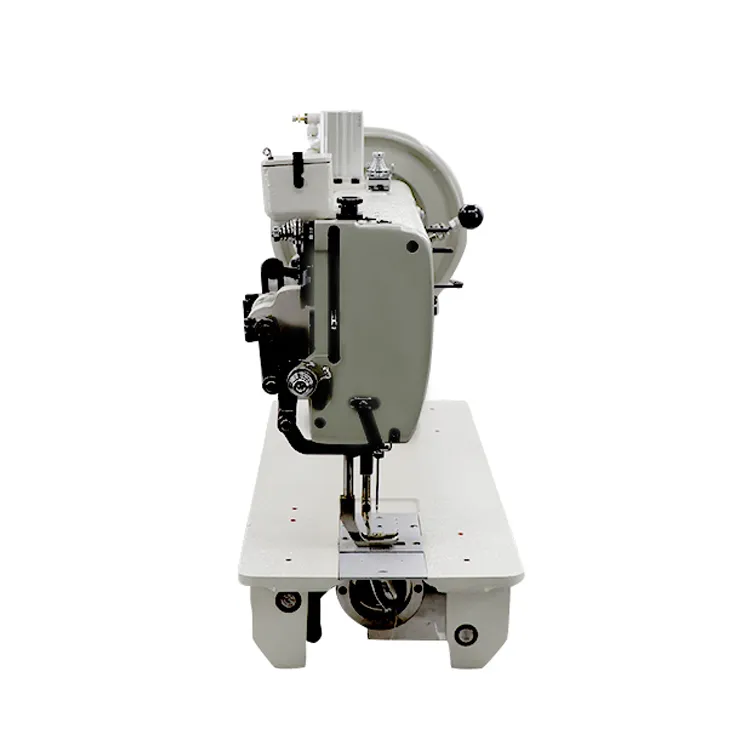auto upholstery sewing machine
The Importance of Auto Upholstery Sewing Machines in Vehicle Interior Design
In the world of automotive design and renovation, the importance of a high-quality upholstery sewing machine cannot be overstated. These specialized machines play a pivotal role in crafting the interiors of vehicles, from classic cars to modern-day models, ensuring not only aesthetic appeal but also durability and comfort.
Auto upholstery sewing machines are specifically engineered to handle the unique materials and diverse sewing processes associated with automotive fabrics, such as leather, vinyl, and specialized synthetic textiles. These materials are often thicker and more robust than those used in conventional sewing projects, which is why standard sewing machines usually fall short when it comes to automotive applications. For instance, thicker threads, heavier needles, and powerful motors are essential to effectively sew through multiple layers of fabric, which may include padding and reinforcements.
One distinct feature of auto upholstery sewing machines is their ability to stitch intricate patterns required in modern vehicle interiors. Car manufacturers are increasingly focusing on the aesthetics of their models, emphasizing not just function but style. This trend has led to the demand for upholstery that features advanced designs, such as diamond stitching, custom logos, and contrasting thread colors. Auto upholstery machines are equipped with features like programmable stitching patterns and adjustable stitch length, allowing for a high degree of customization.
Furthermore, the durability of the stitches made by these machines is critical. Given that vehicle interiors experience a significant amount of wear and tear due to constant use and exposure to the elements, the stitching must be resilient and capable of withstanding various conditions. High-quality auto upholstery machines are designed to create tight, secure stitches that can endure changes in temperature, humidity, and even UV exposure without fraying or breaking.
auto upholstery sewing machine

Training and skill development are essential for upholstery professionals utilizing these machines. Understanding the nuances of fabric behavior, correct tension settings, and machine operation is vital for producing high-quality work. Professionals often undergo specialized training programs to master the use of auto upholstery sewing machines, covering various techniques such as sewing seams, attaching trims, and working with specialized materials.
In the context of auto restoration, the choice of sewing machine can significantly impact the quality of the finished product. Restorers often advocate for industrial-grade machines because they can handle long hours of production and the demands of heavy-duty materials. Investing in a reliable auto upholstery sewing machine can ensure that restorers maintain the original look and feel of classic vehicles, which is paramount for enthusiasts who value authenticity.
Moreover, advancements in technology have led to the development of computerized sewing machines that integrate automation into the sewing process. Such innovations allow for precision in design and creative flexibility, enabling artisans to break free from traditional sewing limitations. This technology not only enhances productivity but also opens up new avenues for artistic expression in automotive upholstery.
In conclusion, auto upholstery sewing machines are an indispensable tool for anyone working in the automotive upholstery industry. Their ability to stitch heavy materials, create intricate patterns, and ensure durable seams makes them vital for producing high-quality vehicle interiors. As car design continues to evolve, so too will the technology and techniques associated with auto upholstery sewing machines, promising exciting possibilities for the future of automotive customization and restoration. Investing in and mastering these machines not only elevates the craft of auto upholstery but also contributes significantly to the overall experience of vehicle ownership.
-
Heavy Duty Leather Sewing Machine: A Must-Have for Professional LeatherworkNewsMay.28,2025
-
Leather Sewing Machine: Essential for High-Quality LeathercraftNewsMay.28,2025
-
Extra Heavy Duty Sewing Machine for Premium Leather ApplicationsNewsMay.28,2025
-
Walking Foot Cylinder Arm Sewing Machine: Precision and Power CombinedNewsMay.28,2025
-
Industrial Cylinder Arm Sewing Machine: Engineered for High-Performance StitchingNewsMay.28,2025
-
Cylinder Bed Sewing Machine: A Powerful Solution for Precision StitchingNewsMay.28,2025
-
Zigzag Sewing MachineNewsMay.12,2025





























